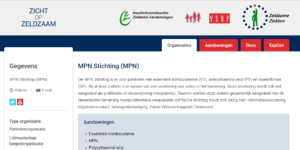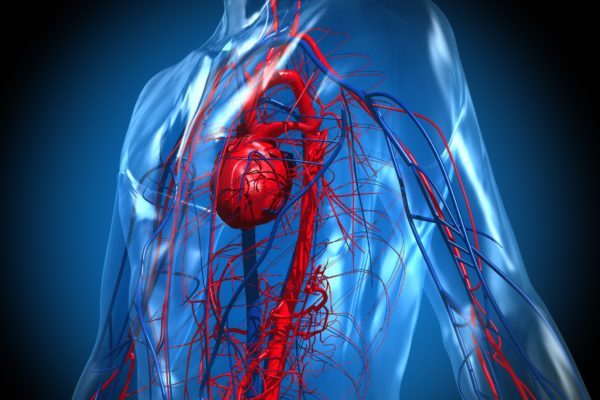
MPN-Stichting: Zicht op zeldzame ziekten (Nederlands)
De MPN Stichting is er voor patiënten met essentiele trombocytemie, polycythaemia vera en myelofibrose.
Essential thrombocythemia (ET) is a rare disease in which the body produces too many blood platelets (thrombocytes). ET belongs to a group of conditions called myeloproliferative disorders. Myeloproliferative disorders cause platelets, white blood cells and red blood cells to grow abnormally in the bone marrow. Normally there is control over the amount of new platelets that are produced in the bone marrow. However, a mutation in a certain protein (called JAK2) causes an uncontrolled growth of platelet cells.
Having too many platelets may cause disruptions in blood circulation and increases the risk of blood clots in the veins (venous thrombosis) or arteries (arterial thrombosis). Bleeding can also occur as too many immature and non-functioning platelets enter the blood stream.
Essential thrombocytosis is a rare disease with about 120 new patients per year in Belgium. It is mainly found in older (50-60 years) patients and somewhat more common in women. However, the condition can manifest itself at all ages.
Essential thrombocythemia may be asymptomatic. The disease is often diagnosed as part of a routine check-up, after a blood test reveals a high platelet count. Symptoms present may be related to small or large vessel disturbance, the formation of blood clots in the vessels, or bleeding.
Common symptoms related to small vessel disturbances may include:
Thrombotic complications can also occur. These are due to the temporary interruption of blood flow to specific parts of the body resulting in:
A transient ischemic attack (TIA) or mini-stroke occurs when a blood clot is formed in the arteries that supply the brain. Signs and symptoms of a stroke or TIA develop suddenly and include:
Essential thrombocythemia may cause bleeding, especially if the platelet count is extremely high (more than 1 million platelets per microliter of blood). Bleeding can manifest as:
In essential thrombocythemia, precursor cells for platelets (megakaryocytes) in the bone marrow are more sensitive to growth factors. This may be caused by mutations in the JAK2 and CALR genes. In rare cases, the disease is caused by mutations in the MPL, THPO, and TET2 genes. The proteins produced from the JAK2, MPL, and THPO genes work together to turn on the signaling pathway called the JAK/STAT pathway that transmits chemical signals from outside the cell to the cell’s nucleus. This leads to the proliferation of blood cells in the bone marrow, particularly platelets.
A mutation in the JAK2 kinase is present in 40–50% of cases and is diagnostic if present. There are several cases where no mutation can be detected and it is thought that these cases may be due to mutations in genes that are not yet identified.
Essential thrombocythemia is often suspected after a routine blood test shows that a patient has a high platelet count. Because there can be many causes for an increased number of platelets in the blood, extensive research must be carried out in order to be able to diagnose essential thrombocytosis.
Common tests for diagnosing ET include:
Essential thrombocythemia can’t be cured, however, there are treatments available. Treatments for essential thrombocythemia is usually based in reducing the platelet count to avoid complications. Available treatments are not curative and do not prevent further evolution of the disease to acute myeloid leukemia or myelofibrosis. When treated, lifespan is expected to be normal despite the disease.
While some ET patients may be asymptomatic and require no treatment, others may require various treatments and therapies, based on the symptoms and the results of routine monitoring. Treatment depends on the risk of blood-clotting or bleeding episodes. It is therefore recommended to determine the risks of having complications according to the age, medical history and the presence of specific mutations to decide which the best treatment should be.
The classification of the disease according to the risks is as following:
Recommendations based on risk are as follows:
When treatment is necessary, the available treatment options include:






